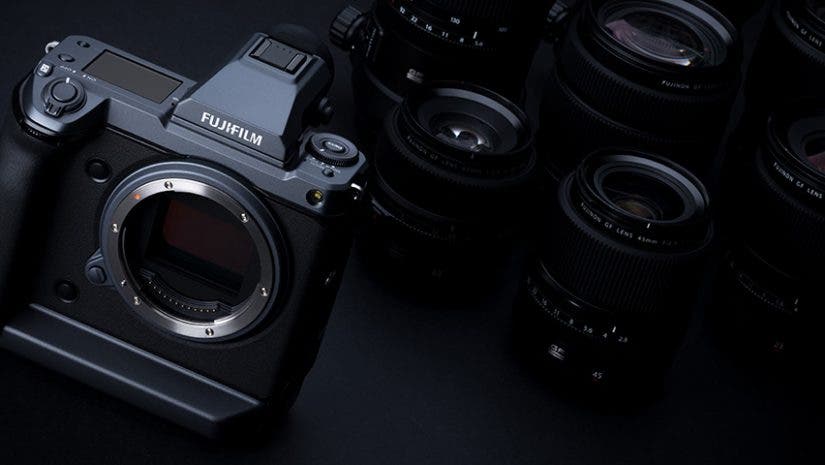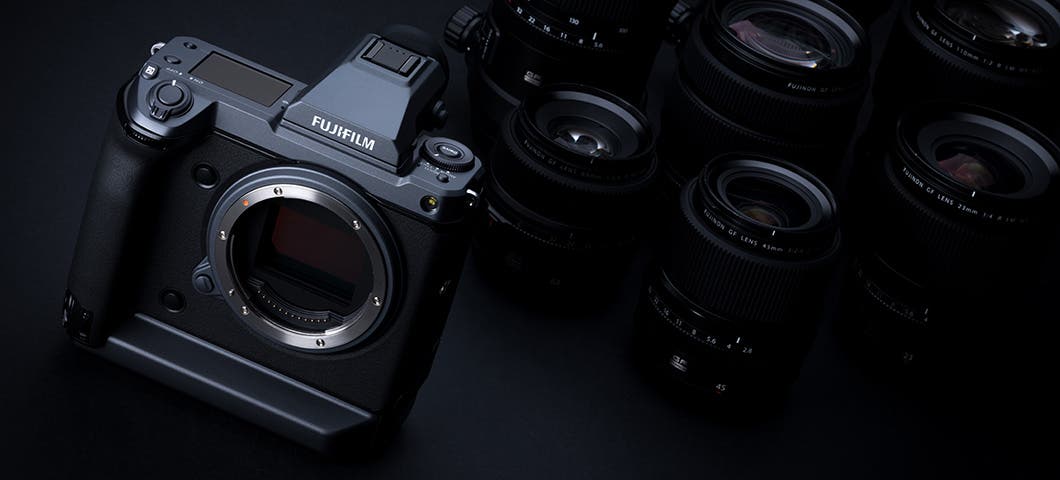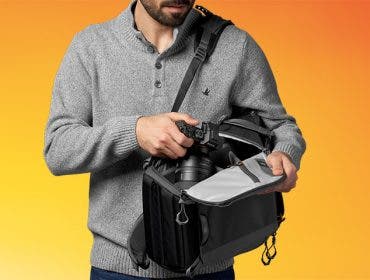I have worked with a variety of medium format cameras since early in my career, way back in the film days (the 1990s). I have always loved the look and feel of medium format images — and also how you work with a larger format camera. And Fujifilm has reinvented medium format photography with this camera — the GFX 100.
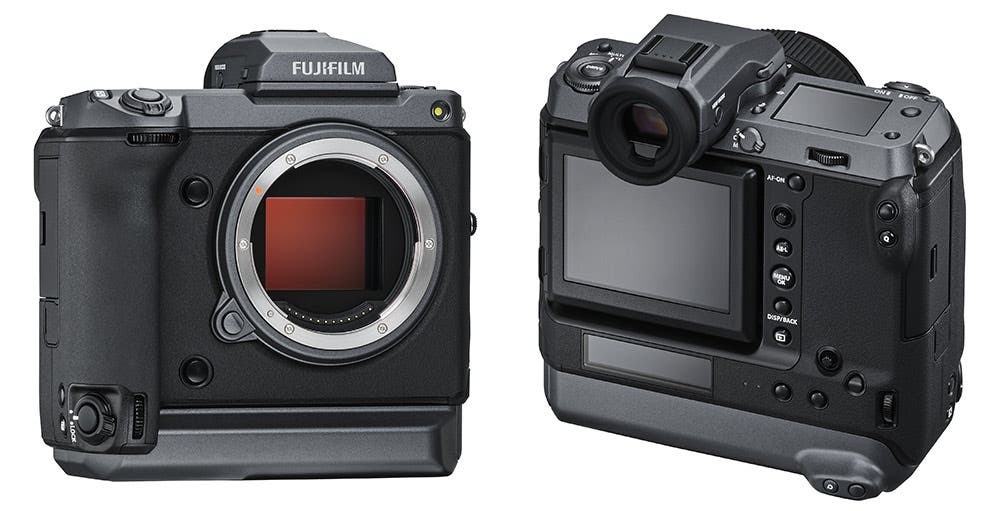
I am always on the hunt for the best image quality possible. Part of that is resolution and part of that is bit-depth, as well as other factors. Before I even got my hands on this camera, I knew a considerable amount about the specs, as it was announced last fall. I had an inkling that several of the features — like the IBIS, the faster autofocus and the faster frame rates — might work well for my adventure sports photography. Of course, having tried out Fujifilm cameras in the past, I also knew that they have great color straight out of the camera and they know how to make a great camera system — including wicked sharp lenses.
Even though I generally work with smaller full-frame format cameras for a lot of my adventure sports work, I have also worked a lot with a 50MP medium format camera over the past four years.
The last year has been a fascinating and nervous time for may pro photographers. With camera manufacturers now offering mirrorless camera options, there are many of us pros transitioning away DSLRs and rethinking everything, including which brand of camera to go forward with. To me, it is clear that mirrorless is the future, and this camera, in particular, is a harbinger of that — and of things to come.
Key features:
- 102MP Back-Side Illuminated (BSI) sensor
- Large format with IBIS — built-in 5-axis image stabilization
- On-board phase detection hybrid AF with near 100% coverage
- Large format with full sensor width 4K video at 30p /10bit
- 16 film simulation modes
- Capture One supported
The camera in action:
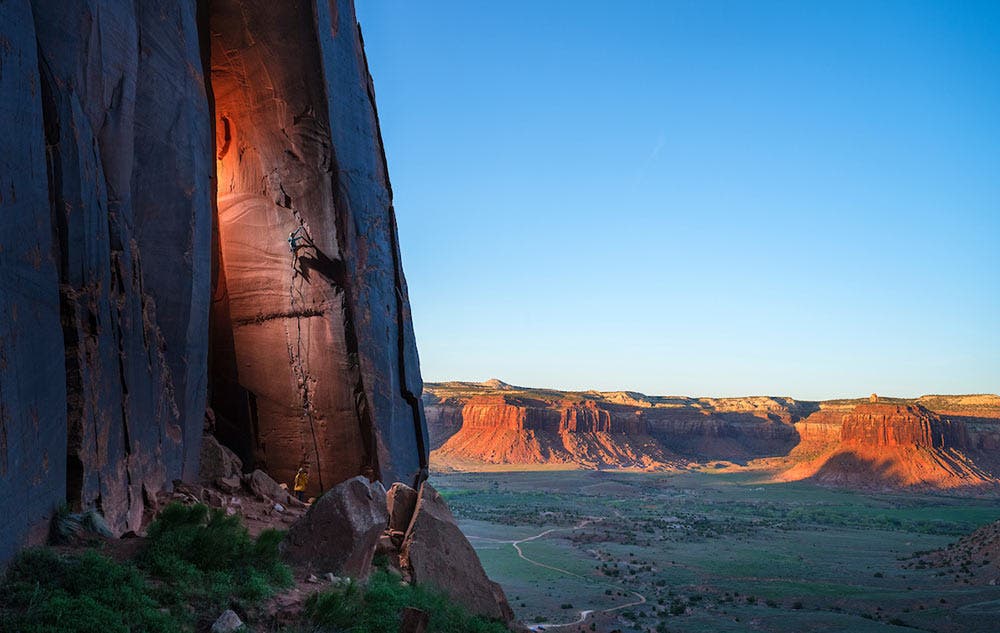
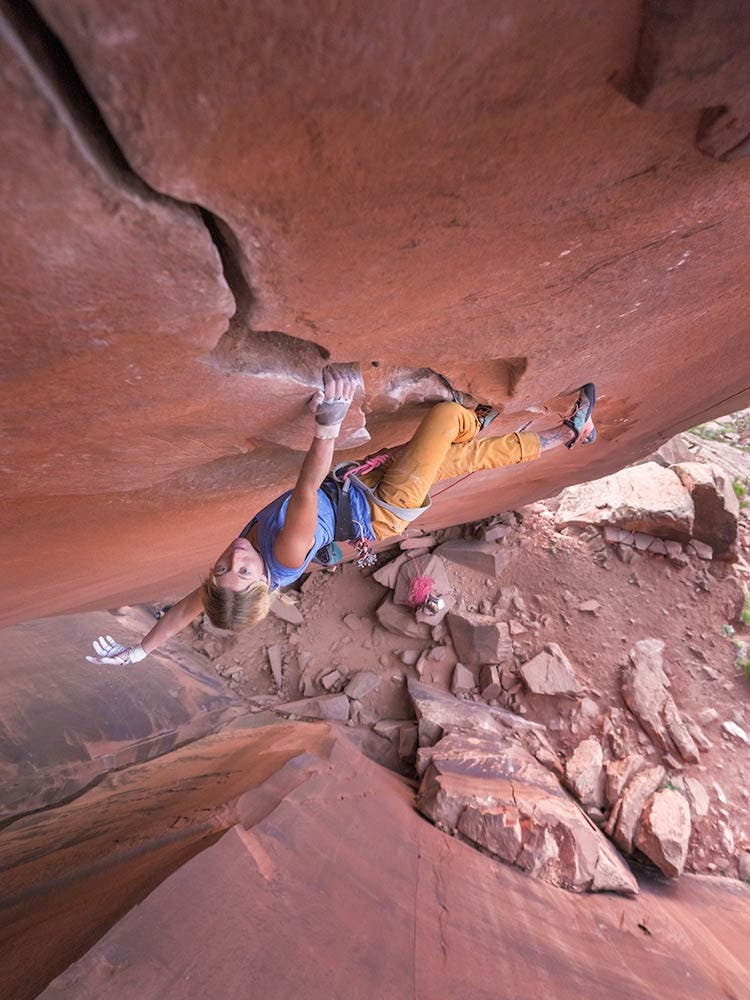
For this assignment with the GFX 100, I decided to go back to my roots as a climbing photographer. For the first portion of the assignment, we went to Indian Creek, not far from Moab, Utah. It is a very popular and iconic traditional rock climbing area. Climbers from all over the world travel to climb the splitter cracks in Indian Creek. It is also one of my favorite climbing areas anywhere in the world. Indian Creek, and the sport of rock climbing, were a great test to see how well the in-body image stabilization (IBIS) worked and how the camera did at high ISO settings. It was also a great place to blend artificial lighting with the vertical landscape.
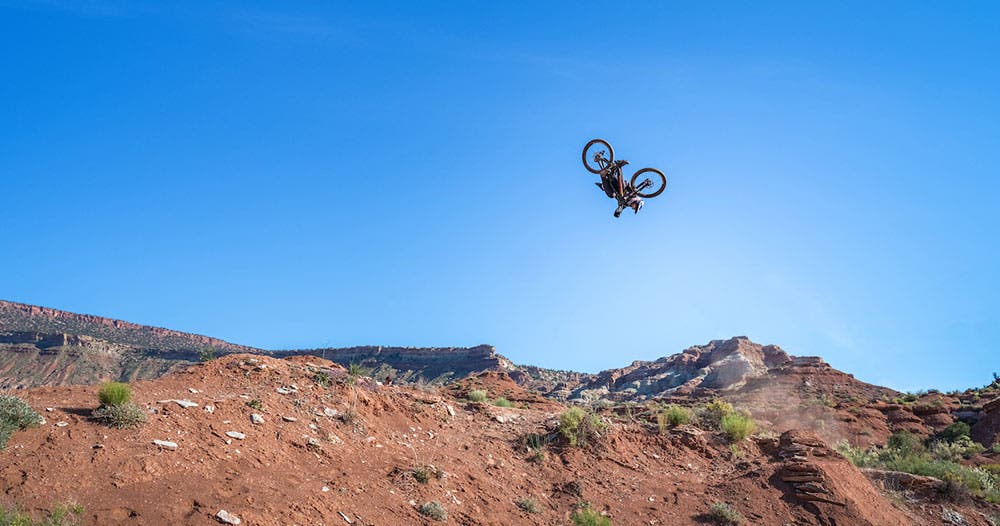
For the second half of the assignment, we chose the sport of downhill freeride mountain biking and went to Virgin, Utah — considered to be the Mount Everest of mountain biking. With its richly colored red mesas and unlimited riding options, it proved to be a great testing ground for the GFX 100’s autofocus tracking modes and to see just how fast the camera could shoot at high frame rates.
Both locations worked out incredibly well and we came away with a pretty stellar set of images showing just how capable a camera is and how far ahead of the competition it is in regards to the rest of the medium format world.
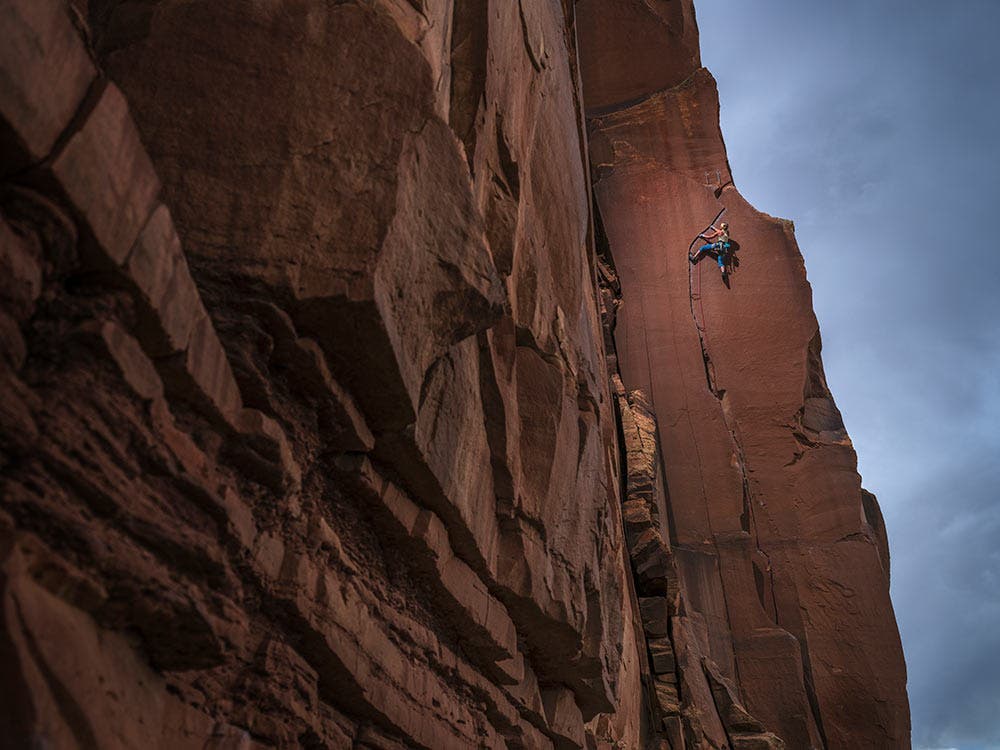
From the rock climbing shoot, I am still trying to figure out which of the images is my favorite, but the image above is one of the stand out images, for sure. To create this image, we had my assistant, Ted Hesser, an excellent climber, climb up an adjacent route and then pull up the strobe kit. He had with him the Elinchrom ELB 1200 strobe with the HS Flash Head and an Elinchrom High Performance reflector mounted on the front of the flash head. That reflector helps to push the light out as far as possible so we could get as much light as possible on the climber and the route. I stood on the ground 50 meters away and framed up the image with the GFX 100.
With a little experimentation, we dialed in the lighting using Hi-Sync lighting techniques. Once we had everything set up, Savannah Cummins, the rock climber, launched up the route. We had her climb the top section of the route — the most interesting section in terms of body position — several times so I could vary the composition.
The thinking with this image is to create a dramatic scene where the climber is lit with pleasing light and the background is about two-thirds of a stop underexposed. In my experience, having the light on the same level or above the climber is critical to make it look somewhat natural and not too forced. We only used one light, as additional ones would be technically very challenging and multiple artificial lights make for an overly commercial look that I am trying to avoid in this scenario. In the end, the lighting looks very subtle, though still obvious, and it highlights the climber and adds a sense of drama.
I used the GFX 32-64mm lens to frame up the shot as it gave me a lot of different framing options. I also wanted a wide lens so I could show the exposed position of the climber. The GFX 100 worked perfectly with the HS lighting technique and the sharpness of this image is hard to overstate. When I showed the image to the climbers later on my laptop, they were blown away, first by the sharpness of the image, and also by the crazy detail when we zoomed in to 100%. One of the great things about working with 102 MP is that you have endless cropping options for both horizontal panoramas and vertical crops as well.
Testing the specs:
There are a variety of new features that all add up to a stellar camera. If I have to pick I would say the built-in IBIS and the amazing autofocus are my two favorite features, and they are also the two that really make this camera stand out from all other medium format cameras.
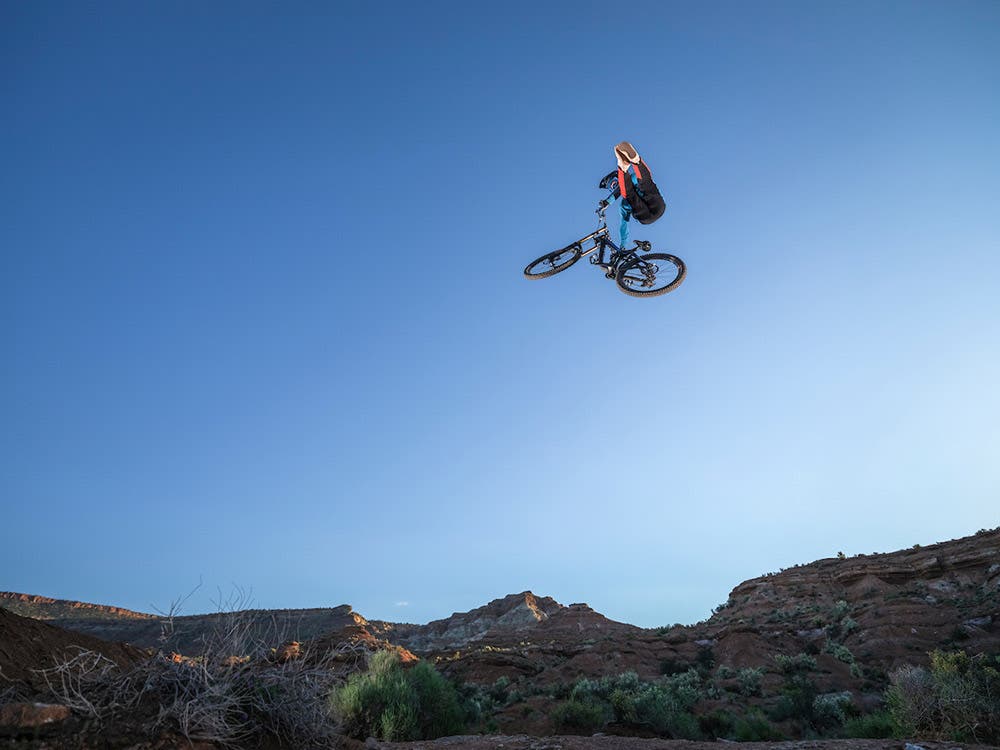
The IBIS extends the handheld shooting possibilities massively. With a 102 MP sensor, camera shake becomes a huge issue. This sensor is much more sensitive to any handling issues than any DSLR I have come across, and I am not the steadiest photographer out there — I drink way too much caffeine. Using the IBIS, I was able to get sharp images all the way down to 1/8th second shutter speeds. That is absolutely incredible. With my current 50 MP medium format camera anything below 1/500th second is dicey in terms of getting sharp images.
The autofocus is comparable to the Fujifilm X-T3, announced last fall. I was shocked at how responsive and accurate it was. The Face Detection and Eye AF was also superb and really simplified a lot of shooting scenarios in terms of the AF. My older medium format camera with one AF point now feels like a glacially slow archaic camera in comparison. And in many instances, I am not sure my other cameras could have done any better in terms of tracking the mountain bikers. The new AF and the IBIS combined make for a camera that can photograph a wide range of subjects no other medium format camera would be capable of capturing.
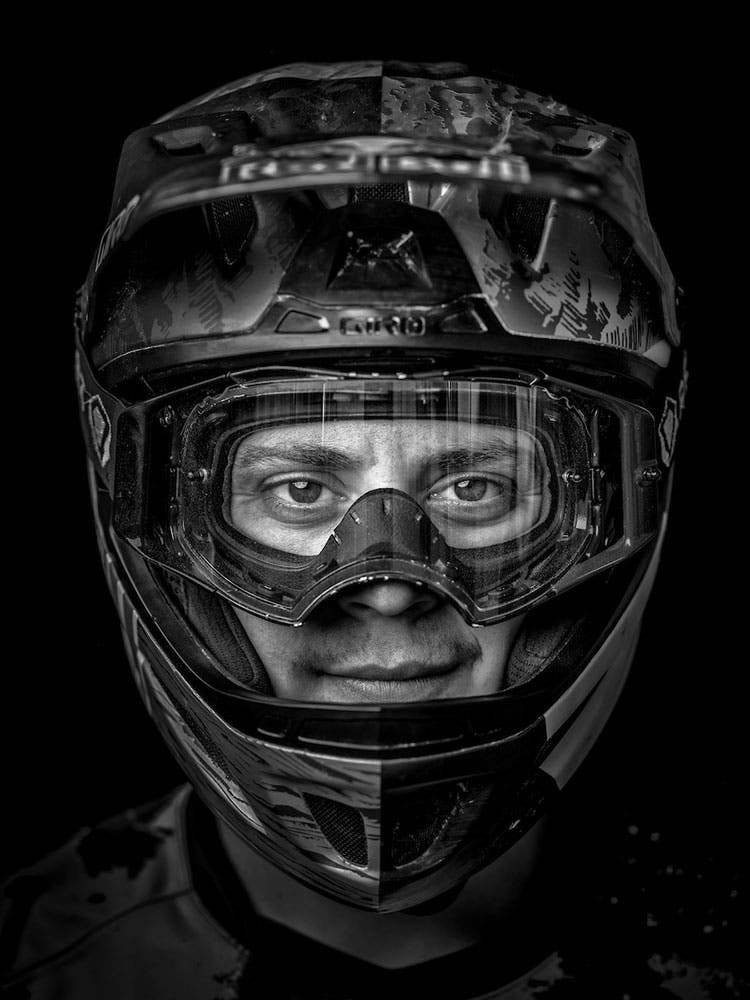
This camera is the most advanced medium format camera ever. In fact, it feels more like an oversized DSLR than it does a medium format camera, just because it has the advanced features of a large pro-body but the image quality of a medium format powerhouse.
For me, this is the ultimate camera in that it combines the ultimate image quality along with amazing autofocus, fast frame rates, and it works in an extremely wide spectrum of shooting situations. There isn’t much this camera can’t do — and that is going to separate it from all other medium format cameras in a big way.
This is going to the camera to beat in the medium format sphere. For those looking for the best image quality possible in still photography, look no further. No DSLR or full-frame mirrorless camera can match the image quality produced by the GFX 100. For those using APS-C or full-frame cameras and looking to upgrade, GFX 100 is certainly an investment.
For professionals looking for the best image quality and the most usable medium format option on the market, this is it. Full-stop. Period.
The Fujifilm GFX 100 is available for preorder now for at Adorama.
